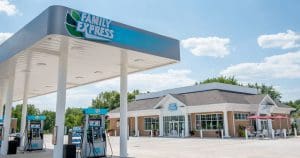3 min read
How to Control the Off-Premises Experience
More than ever before, customers are driven by convenience; they want what they want when they want it, and where. And, so, to keep up with...
Platform
What is Paytronix Guest Engagement Suite?
Combining online ordering, loyalty, omnichannel messaging, AI insights, and payments in one suite. Paytronix delivers relevant, personal experiences, at scale, that help improve your entire digital marketing funnel by creating amazing frictionless experiences.
A Complete Guest Engagement Suite
Online Ordering
Acquire new customers and capture valuable data with industry leading customization features.
Loyalty
Encourage more visits and higher spend with personalized promotions based on individual activity and preferences.
Catering
Grow your revenue, streamline operations, and expand your audience with a suite of catering tools.
CRM
Build great customer relationships with relevant personal omnichannel campaigns delivered at scale.
Artificial Intelligence
Leverage the most data from the most customer transactions to power 1:1 marketing campaigns and drive revenue.
Payments
Drive brand engagement by providing fast, frictionless guest payments.
Solutions
Paytronix Guest Engagement Solutions
We use data, customer experience expertise, and technology to solve everyday restaurant and convenience store challenges.
FlightPaths are structured Paytronix software onboarding journeys designed to simplify implementation and deliver maximum ROI.
Customer Success Plans (CSPs) are tiered service offerings designed to help you get the most from your Paytronix software, whether you prefer self-guided support or hands-on partnership.
Contactless Experiences
Accommodate your guests' changing preferences by providing safe, efficient service whether dining-in or taking out.
Customer Insights
Collect guest data and analyze behaviors to develop powerful targeted campaigns that produce amazing results.
Marketing Automation
Create and test campaigns across channels and segments to drive loyalty, incremental visits, and additional revenue.
Mobile Experiences
Provide convenient access to your brand, menus and loyalty program to drive retention with a branded or custom app.
Subscriptions
Create a frictionless, fun way to reward your most loyal customers for frequent visits and purchases while normalizing revenues.
Employee Dining
Attract and retain your employees with dollar value or percentage-based incentives and tiered benefits.
Order Experience Builder
Create powerful interactive, and appealing online menus that attract and acquire new customers simply and easily.
Loyalty Programs
High-impact customizable programs that increase spend, visit, and engagement with your brand.
Online Ordering
Maximize first-party digital sales with an exceptional guest experience.
Integrations
Launch your programs with more than 450 existing integrations.
Loyalty Programs
Deliver the same care you do in person with all your digital engagements.
Online Ordering
Drive more first-party orders and make it easy for your crew.
Loyalty Programs
Digital transformations start here - get to know your guests.
Online Ordering
Add a whole new sales channel to grow your business - digital ordering is in your future.
Integrations
We work with your environment - check it out
Tobacco Reporting
Comply with AGDC 2026 DTP Requirements
Company
We are here to help clients build their businesses by delivering amazing experiences for their guests.
Meet The Team
Our exceptional customer engagement innovations are delivered by a team of extraordinary people.
News/Press
A collection of press and media about our innovations, customers, and people.
Events
A schedule of upcoming tradeshows, conferences, and events that we will participate in.
Careers
Support
Paytronix Login
Order & Delivery Login
Resources
Paytronix Resources
Learn how to create great customer experiences with our free eBooks, webinars, articles, case studies, and customer interviews.
FlexPoint Service Catalog
Access FlexPoints are a cost-effective, flexible way to access our value-added services, to ensure you get greater impact from your Access software solution.
See Our Product In Action
E-Books
Learn more about topics important to the restaurant and c-store customer experience.
Reports
See how your brand stacks up against industry benchmarks, analysis, and research.
Blog
Catch up with our team of in-house experts for quick articles to help your business.
Case Studies
Learn how brands have used the Paytronix platform to increase revenue and engage with guests.
Unlock loyalty strategies that 3 out of 4 restaurants use to boost engagement by 40% without adding staff.
2 min read
Oct 01, 2019

What if most stores – and even Amazon – are getting frictionless shopping wrong? What would it mean for brands that are trying to do things differently?
Kim Otocki, a member of the Paytronix marketing team, recently had the opportunity to sit down with Gus Olympidis, the president and CEO of Family Express. His c-store brand has firmly established itself as a leader in the frictionless experience, and Olympidis had a lot of wisdom to offer other c-store owners who are trying to follow suit.
“We’re beginning to see a movement away from demographics, toward psychographics,” said Olympidis, pointing out that the cookie-cutter approach of segmenting by generations doesn’t work nearly as well as it used to. A group like the millennials, he points out, is far too large and diverse to use as a guide for consumer wants, needs, and behaviors.
The key to serving consumers best, says Olympidis, is doing everything a c-store can to understand them, independent of their demographic. In order to accomplish this, c-stores need the kind of data insights that will let them treat their customers as individuals instead of members of a broad group.
Some of these insights can be provided by digital loyalty programs and digital customer relationship management. But according to Olympidis, one of the biggest mistakes brands are making right now is assuming that technology equates to a frictionless customer experience.
In fact, he believes that “bad technology creates friction.” Anything that makes it more difficult for consumers to get what they want increases friction, and that can absolutely include technology.
Olympidis cites the Amazon Go stores and their cashier-less environment as an example of the mistaken thinking that technology always decreases friction. As he points out, if a customer at an Amazon Go store wants to interact with a cashier or an Amazon staff person, not being able to find one actually creates friction.
“Having the option for consumers to select their preferred experience is the ultimate elimination of friction,” says Olympidis. An integrated, seamless, orderly experience that allows consumers to get what they want, when they want it, and how they want it is the key to decreasing or virtually eliminating friction.
But of course, not every technological partnership is a suitable one. Olympidis cites three digital connectivity fundamentals that c-stores can use to gauge whether a partnership will work.
First, a potential partner must be willing to connect and use the most effective solution, not just a preferred one. Second, a potential partner must possess the capacity to connect, having the technology to make the connection as well as the time and staff to implement it. And finally, a potential partner must have a similar organizational culture so not only will the initial integration go smoothly, but both companies will be on the same page regarding data sharing and goals.
Olympidis finished up the discussion with this insight about the priorities of a successful company:
“A certain amount of our time should be devoted to imagining. The management of the business inherently gravitates towards absorbing the bulk of our energy. But virtually everything we’re managing was imagined at one point, and having enough time to imagine the things you’re going to be managing tomorrow is essential for a better future.”
To watch a free, on-demand video of the interview, click here.

3 min read
More than ever before, customers are driven by convenience; they want what they want when they want it, and where. And, so, to keep up with...